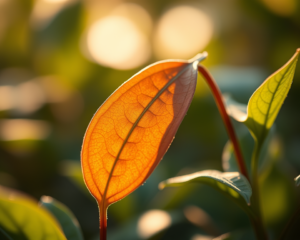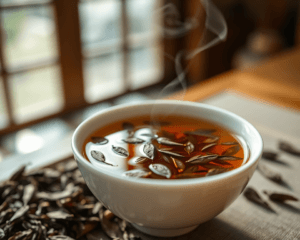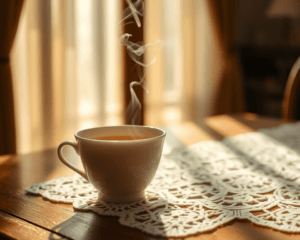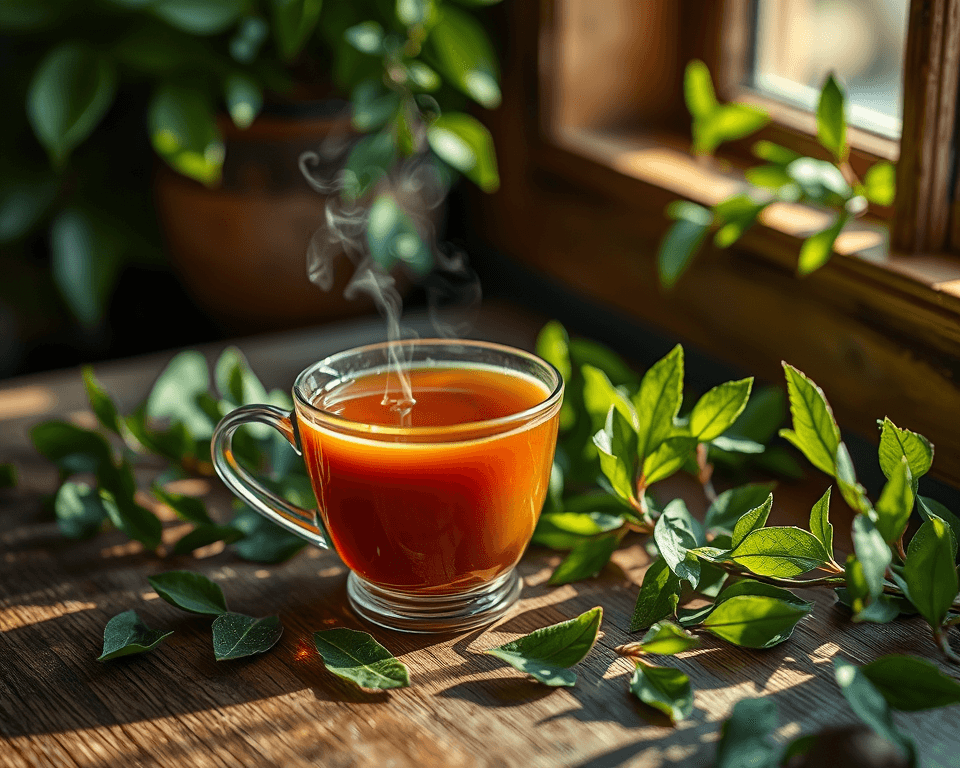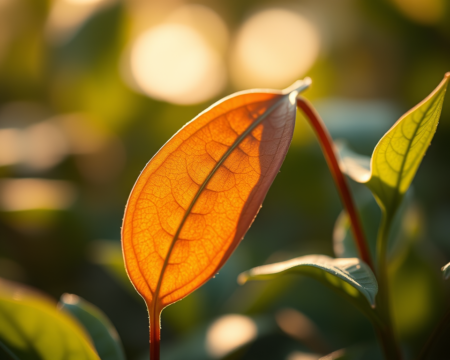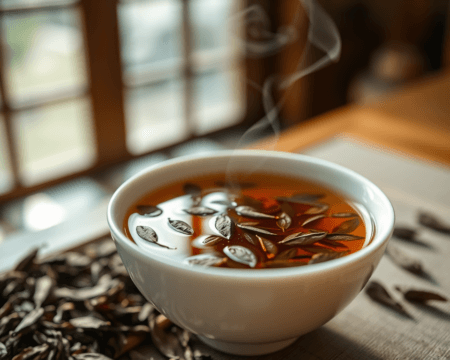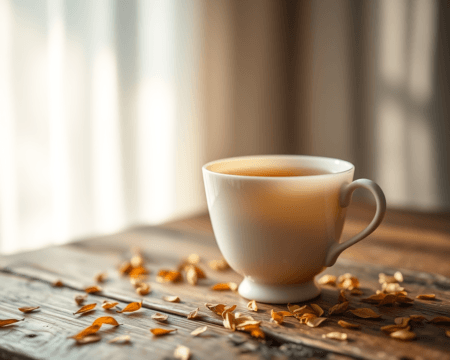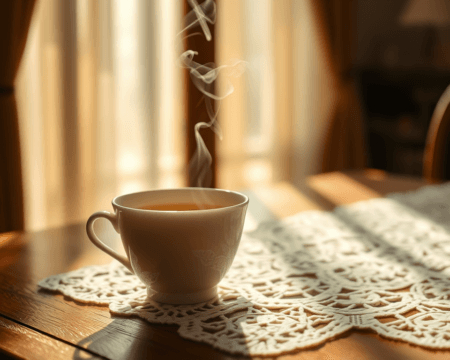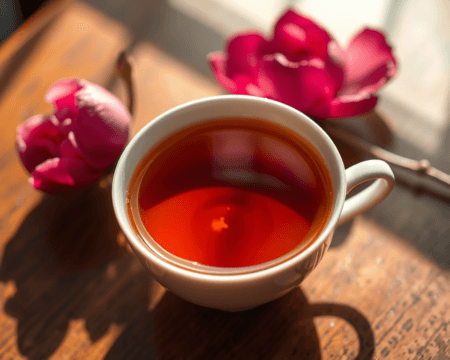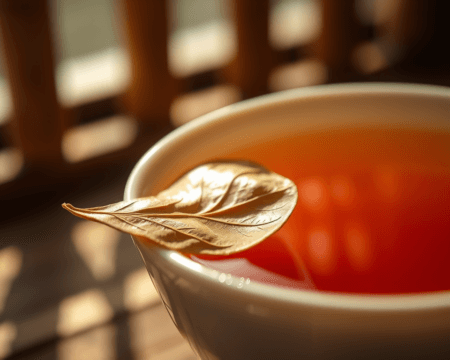Are you a tea lover who savors every sip but finds caffeine a bit too much? Ever wondered how they turn your favorite brew into decaf? Well, let’s break it down because this process is a blend of science and art that keeps your teacup filled without the jitters. You might just find yourself reaching for that steaming cup more often when you know what’s behind the decaf curtain.
Key Takeaways
- Decaf tea has become a staple for those seeking caffeine-free options without compromising flavor.
- There are several decaffeination methods, each impacting taste differently.
- Understanding health implications can help you make informed choices about your beverage.
- Popular brands offer diverse options that cater to every flavor palate.
Overview of Decaf Tea and Its Popularity
What is Decaf Tea?
Decaf tea isn’t just your regular tea with the caffeine stripped away—it’s an entire world of caffeine-free tea, designed for you to enjoy without the buzz. Simply put, decaf tea is made from leaves that have undergone a process to remove most of the caffeine while keeping the flavor intact. The result? A beverage choice that resonates with those who want to unwind.
Now, you might be wondering what types of tea can be decaffeinated. The beauty lies in the options: from blacks to greens and even vibrant herbal alternatives, all can be found in caffeine-free forms. Whether you love that rich malty taste of Assam or the delicate notes of chamomile, there’s a decaf version out there just waiting for you to try.
The Rising Demand for Decaffeinated Options
The popularity of decaf tea is on an upswing, especially as more people shift toward health-conscious choices. You see it everywhere—in cafes, grocery stores, and straight-up in conversations. Consumers are increasingly interested in caffeine alternatives, and the beverage industry is stepping up to meet that demand.
This surge isn’t just a trend; it’s fueled by growing awareness around caffeine’s impacts on health. Busy lives demand options that don’t compromise energy levels—hence the rising interest in decaffeinated options. And trust me, this isn’t just about skipping the jitters; it’s about ensuring you stay refreshed and hydrated with every cup you drink.
Decaffeination Methods Explained
Common Methods for Decaffeinating Tea
There are several ways to decaffeinate tea, and each technique has its own flair. Here are some of the most common methods:
1. CO2 Method: This high-efficiency method uses carbon dioxide to selectively extract caffeine from the tea leaves. It maintains flavor better than many other methods, which means your cup still tastes robust and rich.
2. Water Processing: Here’s where we get a little simpler—the leaves are soaked in water to dissolve the caffeine. Unfortunately, this method can strip away some of the essential flavors as well, so you might notice a difference from regular tea.
3. Solvent Extraction: This involves using chemicals like ethyl acetate to draw out caffeine. While effective, it raises questions about the purity of the tea and potential residual chemicals.
4. Natural Decaffeination: This process often involves simply using hot water and no chemicals, but it might not get rid of all the caffeine—so if you’re super sensitive, check your label!
Each of these methods has its perks and downsides, often coming down to a trade-off between flavor and efficiency. The CO2 method leads the pack in quality, giving you the rich flavors you love without the caffeine kick.
Impact of Decaffeination on Flavor
Ah, the flavor! Let’s not forget why we reached for that cuppa in the first place. Decaffeination can affect the taste profile, and it’s crucial to understand what this means for your tea experience.
When you compare regular to decaf tea, you might find decaf has a slightly milder taste. Some aficionados even argue it can come off as a bit flat when you compare it directly to its caffeinated counterpart. However, many top brands work hard to ensure that you’re still getting that aroma and flavor you crave.
Decaf Tea vs. Regular Tea: A Taste Comparison
How Flavor Profiles Differ
Here’s the juice: if you’ve got two cups side by side—one decaf and one regular—your palate might pick up on some subtle differences. Decaf doesn’t always pack the same punch as regular tea, often leading to a lighter experience. Think of it as the difference between a full-bodied red wine and a light rosé.
My advice? Don’t hesitate to conduct a little taste test with friends. Get a variety of brands of decaf and regular teas, brew them up, and see if anyone notices the difference. This subjective experience will give you valuable insight into how much flavor carries over after decaffeination.
Consumer Preferences and Reviews
In the world of tea, consumer feedback is golden. Many tea drinkers are vocal about what they like and dislike about various decaf options, and gathering market reviews can help you find the best of the best.
Some of the favorites include:
- Twinings Decaffeinated Black Tea: Known for its smooth taste and great quality, this one has received high ratings.
- Bigelow Decaffeinated Green Tea: A solid pick if you still want that green tea flavor without the kick. It’s crisp and refreshing.
- Celestial Seasonings Herbal Teas: If you’re after something more unique, this brand offers several herbal blends, like chamomile and peppermint, all caffeine-free!
When searching for quality decaf teas, don’t hesitate to check out customer ratings. People are passionate about their brews, and their feedback can guide you to some fantastic options.
Health Implications of Decaf Tea
Benefits of Drinking Decaf Tea
Let’s talk about health because, let’s be real, that’s why most of us are leaning towards decaf. One of the biggest draws is the antioxidant properties of tea, which still hold true for decaf. Just because the caffeine’s gone doesn’t mean you lose those health benefits.
You’ll also find that decaf helps those with caffeine sensitivity enjoy a delightful beverage without the side effects that caffeine can cause—like jitters or digestive issues. So if you’re someone who has experienced caffeine withdrawal, switching to decaf can be a lifesaver.
Potential Drawbacks of Decaf Tea
But let’s not sugarcoat things. There are potential health concerns with decaf tea as well. Some people worry about digestive distress or the effects of added flavoring agents used in some commercial decaf teas.
You’ve got to read the labels! It’s essential to choose brands that stick to natural ingredients if you want to avoid some of the potential downsides, including added sugars or synthetic flavors.
Popular Brands and Types of Decaf Tea
Overview of Leading Decaf Tea Brands
When it comes to picking the right decaf, there are some heavy hitters in the game. You want brands that commit to quality and taste without cutting corners. Here are a few that stand tall in the decaf market:
| Brand | Type | Notable Features | Price (approx.) |
|---|---|---|---|
| Twinings | Black, Green Teas | Smooth flavor, high-quality blends | $5.00 – $8.00 |
| Bigelow | Green, Herbal Teas | Variety of flavors, all-natural bags | $3.50 – $6.00 |
| Celestial Seasonings | Herbal Teas | Wide range of herbal options, no caffeine | $3.00 – $5.00 |
| Yogi Tea | Herbal/Spiced Teas | Focus on wellness and ginger blends | $4.00 – $7.00 |
This table gives you a quick glance at some of the most reputable brands that you can reliably turn to for a quality decaf tea experience.
Exploring Different Types of Decaf Tea
The world of decaf is rich with options! Whether you lean toward the grassy brightness of decaf green tea or the robust warmth of decaf black tea, there’s a plethora of flavors just waiting to be explored.
Herbal teas offer their own unique charm. Brands like Celestial Seasonings and Yogi Tea will have you reaching for your cup with spicy chai, soothing chamomile, or zesty lemon blends. Here’s where you can get creative—try mixing flavors or brewing iced decaf for those hot summer days.
Getting the most out of your decaf journey means experimenting with different types and finding flavors that resonate with you!
“In a world full of chaos, take a moment to sip on something that caters to your soul—decaf tea is that answer.”
Now that you’re fully armed with knowledge about the decaffeination process and the world of decaf tea, it’s time to prepare that next cup. So explore some brands, savor the flavors, and discover which decaf options are your new go-to!
Frequently Asked Questions
What are the main methods of decaffeination for tea?
The most common methods of decaffeination include the Carbon Dioxide method, the Ethyl Acetate method, and the Water Processing method. Each technique affects the flavor profile differently, with the CO2 method being known for preserving the most flavor and aroma.
Is decaf tea completely caffeine-free?
No, decaf tea is not entirely caffeine-free; it typically contains a small amount of caffeine—about 2-5 milligrams per cup compared to 40-70 milligrams in regular tea. This is due to the nature of the decaffeination process.
Are there specific health benefits to drinking decaf tea?
Decaf tea can provide similar health benefits to regular tea, such as antioxidants and support for heart health, without the stimulating effects of caffeine. It can be a good option for those sensitive to caffeine.
Can I brew decaf tea the same way as regular tea?
Yes, you can brew decaf tea similarly to regular tea. However, steeping times may vary based on the specific type of decaf tea. It’s best to follow the instructions on the packaging for optimal flavor.
Does decaf tea taste the same as regular tea?
While decaf tea aims to preserve the flavor of regular tea, some people may notice slight differences in taste due to the decaffeination process. However, many brands offer high-quality decaf varieties that come close to the original flavor.
Is decaf tea suitable for children?
Decaf tea is generally considered safe for children, as it has lower caffeine levels. However, it’s important to monitor their overall caffeine intake from other sources and consult a pediatrician if you have concerns.
Are there any specific brands known for quality decaf tea?
Yes, several brands are known for their high-quality decaf tea options, including Twinings, Harney & Sons, and Stash Tea. These brands often provide a variety of flavors and blends you can explore.
Can I use decaf tea in recipes that call for regular tea?
Yes, decaf tea can often be substituted for regular tea in recipes, especially in beverages or desserts. Just be mindful that the flavor might be slightly different, so adjustments may be necessary for the best results.
What types of decaf tea are available?
Decaf tea comes in various types, including black, green, herbal, and flavored blends. There is a wide range of options available, ensuring that every tea lover can find a taste they enjoy without the caffeine.
